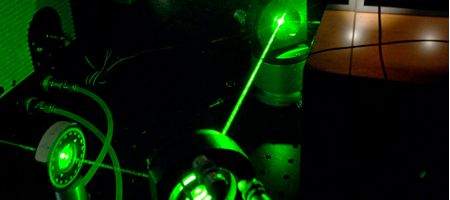Scientists say they’ve developed a laser that can detect roadside bombs – the biggest killers of colaition forces in Iraq and Afghanistan.

The Michigan State University laser – no more powerful than a simple presentation pointer – is sensitive and accurate enough to detect improvised explosive devices (IEDs) across a wide area, says the team.
It’s not an easy thing to do, as the environment introduces a large number of chemical compounds that mask the select few molecules that one is trying to detect, says team leader Marcos Dantus.
“Having molecular structure sensitivity is critical for identifying explosives and avoiding unnecessary evacuation of buildings and closing roads due to false alarms,” he says.
The device appears affective at distinguishing explosives from the vast array of similar compounds that can be found in urban environments, and can handle quantities as small as a fraction of a billionth of a gram.
The laser beam combines short pulses that kick the molecules and make them vibrate with long pulses that are used to ‘listen’. These identify the different vibrational frequencies that uniquely identify every molecule.
The laser can work in tandem with cameras and allows users to scan questionable areas from a safe distance.
“The laser and the method we’ve developed were originally intended for microscopes, but we were able to adapt and broaden its use to demonstrate its effectiveness for standoff detection of explosives,” says Dantus.
The research was partly funded by the Department of Homeland Security.






